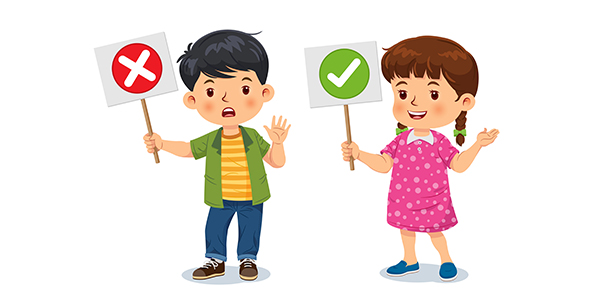Ways to approach the topic of good touch and bad touch with your child
Many parents avoid talking to their children about unwanted touching, despite the advice of specialists. Parents frequently discuss with their kids how to stay safe while crossing roads, playing on the ground, traveling, etc. However, discussing sexual assault is more challenging and important than this. One in four parents of children in elementary school claim that they haven't discussed inappropriate touching with their kids. The most frequent excuses are procrastination, that the child is too young, that the parent doesn't want to terrify the youngster, and that the parent doesn't know how to bring it up.

For parents who might feel uneasy or uncertain about how to handle the topic, there are approaches that nursery schools in Pune are adapting to educate parents so that they can provide children the skills they need to stop sexual assault attempts, confront the perpetrators, or react to them
Teach that "your body is yours to control.”:
To start with an easy conversation talk in simple words about body safety. Try to explain them in easy language, with daily life examples about the safety precautions that we take like, wearing helmets and fastening seat belts while driving, having healthy food to stay healthy and active, etc. This way you can gradually begin the topic of physical safety and bad touch. Ask them to voice it out if any peer, sibling, or stranger physically hurt them. They should be taught to stop any physical hurt to them in a polite way first and to report it to the seniors or teachers if any repeated instances happen.
Use the correct terminology for body parts:
Use the appropriate terminology for your child's private parts when introducing or discussing bodily parts with them. Inform your young child that their private areas are private and belong to them only if they are under 3 years old.
You can describe body boundaries to older kids. How they ought to respect both their own bodies and those of others. Introduce the idea of terminology for safe and unsafe touches in a succinct manner.
Act and show:
This is amazing when your youngster has begun to speak. Younger children can be shown that they shouldn't touch or allow anyone to touch their privates. Additionally, you can role-play safe touch scenarios to help kids learn about various touches and the emotions they have. Schools have started arranging for skits and plays to show what could be the good and bad touch in schools or outside.
Distinguish between good and bad touches:
You may teach your kids about different kinds of touching. Safe (positive) touches to provide a calming sensation, similar to pats on the back or requested embrace. Unsafe (or dangerous) contact, such as pinching or hitting, injures your body or your emotions. Children must learn that it's acceptable to decline requests from family or friends.
Obviously, it is very difficult and uncomfortable to explain good and bad touch to our child. However, it is the most relevant topic to discuss with them, and being a parent you should not afford to miss to impart this knowledge and its do’s and don’ts with your kids.



